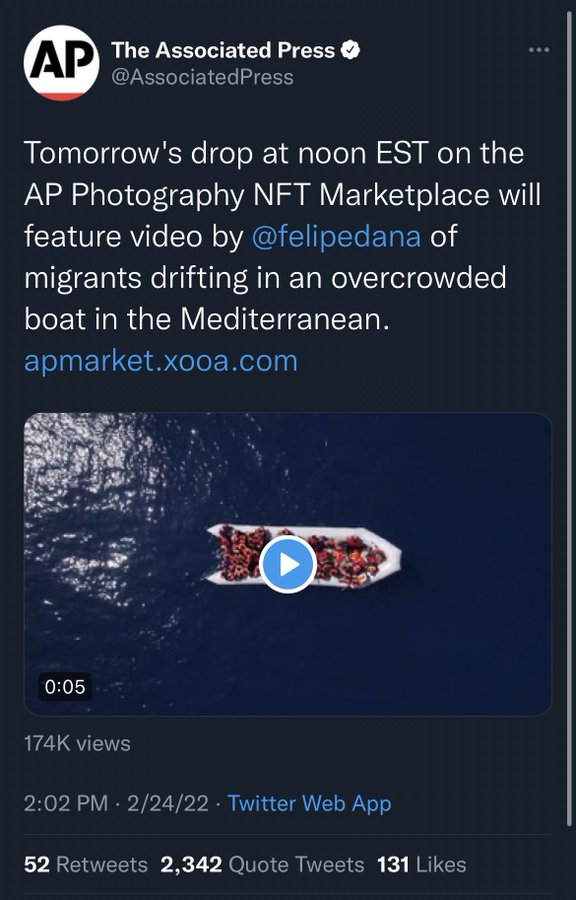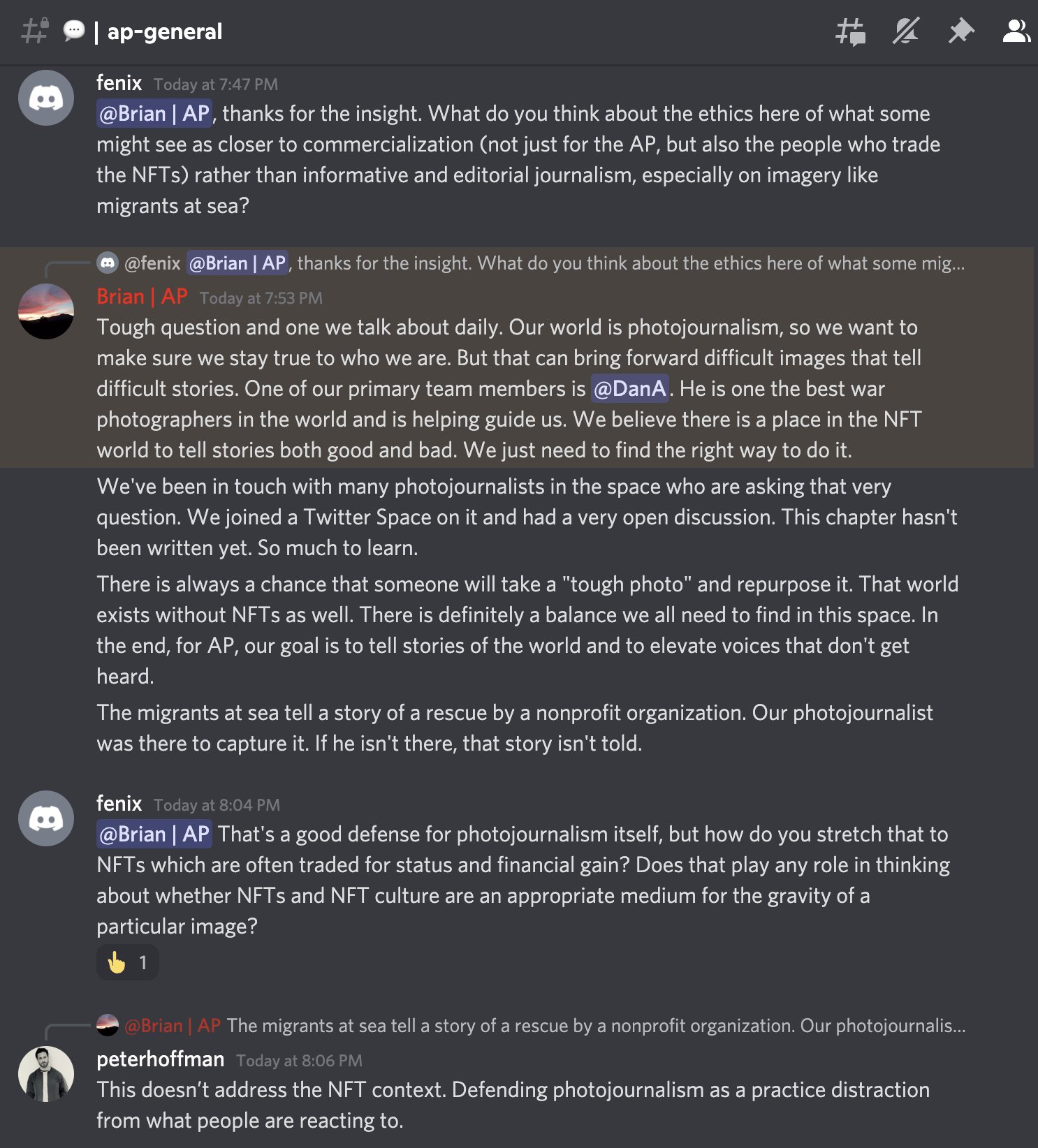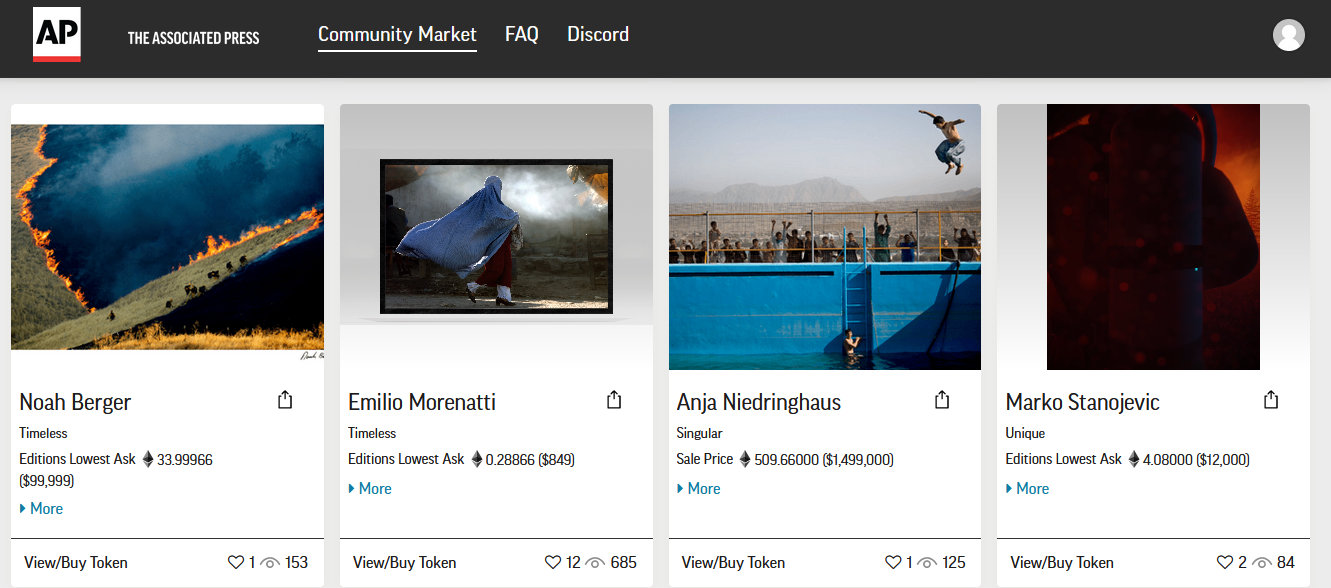The Associated Press (AP) has withdrawn plans to sell an NFT showing migrants in an overcrowded dinghy, describing it as a ‘poor choice’ to sell as a digital asset.

The AP has been experimenting with selling its photojournalism as NFTs – Non-Fungible Tokens – that are bought and sold with cryptocurrency and exist securely on a block chain as digital assets.
The news wire agency’s first foray into the weird world of NFTs was back in May 2021, when it unveiled plans to auction 10 digital works, launching with a bizarro re-imaging of the Joe Rosenthal’s iconic Pulitzer-prize winning image, American flag on Iwo Jima. The agency initially had a big bid of of 11.96 Ethereum, equalling to around US$30K at the time, but the bid expired.
And then AP’s NFT listing mysteriously vanished. After sending a query in July 2021, AP told Inside Imaging the agency moved the operation from OpenSea, the world’s largest NFT marketplace, to Ethernity. And now the agency is selling NFTs through the Xooa marketplace. AP’s throwing everything it has at the various NFT walls to see what sticks! And this includes a video of desperate migrants fleeing for a better life.
The video was shot by Brazilian award-winning photojournalist, Felipe Dana, who captured the birds-eye footage in 2018. According to Dana, the migrants left Libya and were sailing across the Mediterranean toward Europe, and were rescued by Spanish NGO, Proactiva Open Arms.
The backlash
When the AP posted a Tweet about plans to mint and sell the video as an NFT, with the ‘drop’ (NFT-speak for launch) scheduled for the following day, there was swift online backlash. It’s hard to comprehend the AP’s logic for making this footage an NFT. Commercialising photojournalism of human suffering through non-editorial use has poor optics, and it’s surprising no one at AP – including Dana, the photojournalist – foresaw how this would be received.
Behavioural scientist, Caroline Orr Bueno, wrote on Twitter that the drop ‘looked a whole lot like an attempt to make money off the plight of desperate migrants’.
Here’s some other takes by folks on Twitter, lifted from The Guardian:
‘This is so far beyond the bounds of appropriate,’ wrote John Stanton, editor of the New Orleans news outlet Gambit.
‘How did this get all the way to execute without a single journo saying something,’ asked another journalist, SI Rosenbaum.
On the AP’s Discord, an instant messaging service, Brian Holden, AP’s director of Global Technical Engagement, bravely fielded questions and explained that participating photographers are ‘consulted and are active participants in the project’.
‘We have multiple people across the AP talking through the selections including our photojournalists. We see a world where photojournalism NFTs have a place. And that place helps AP with our overall mission – to inform the world. The video is part of a bigger story and we realised to needed to do a better job at telling it’.
Photographer and journalist, Tony Webster, captured screenshots of Holden’s Discord communication where he explains the photographer receives between 12 to 60 percent of the primary sale and a percentage on all secondary sales.

The AP also responded publicly via Twitter stating it deleted the NFT promotion, which was ‘a poor choice of imagery… It has not and will not be put up for auction.’ The agency added that the its NFT martketplace is a ‘pilot program’, and its ‘efforts’ are under review’.
Another AP senior manager, Dwayne Desaulniers, director of AP’s Enterprise Blockchain & Data Licensing, said he ‘believes’ in creating photojournalism NFTs although admitted the migrant boat story was a mistake. ‘It’s certainly possible that my decision to use the photo (it was actually a video) was fatally flawed. But I don’t think the overall effort or vision (selling photojournalism NFTs) is.’
Webster, on the other hand, suggests commercialising photojournalism is against AP’s own policy.
‘The AP sells licenses to images depicting human suffering all the time, but under an “editorial use only” licence, which is restricted to “editorial purposes in connection with reporting” with a specific restriction on commercial use,’ Webster pointed out in the Discord chat. ‘That makes sense to me, as it furthers the AP’s mission of expanding knowledge while paying the photographer for their time, gear, skill and the risks they take. I’ve seen you defend photojournalism NFTs as cementing truth in the blockchain, but could you do that without turning the images into NFTs – privately traded commodities. How is this not just naked commercialisation specifically against the AP’s own rules?’

The AP team points out the other NFTs on Xooa are more appropriate for what it qualifies as a photojournalism NFT. Images include an Afghani woman wearing a burqa by Emilio Morenatti, as well as architecture photos, pictures by David Goldman of a melting iceberg and a stranded Polar bear, and other quirky and sometimes cringy re-imaginings of AP photos.
The NFTs come in digital editions, with 200 copies of one and 10 of another. Prices range from US$275 to US$99,999.





Be First to Comment